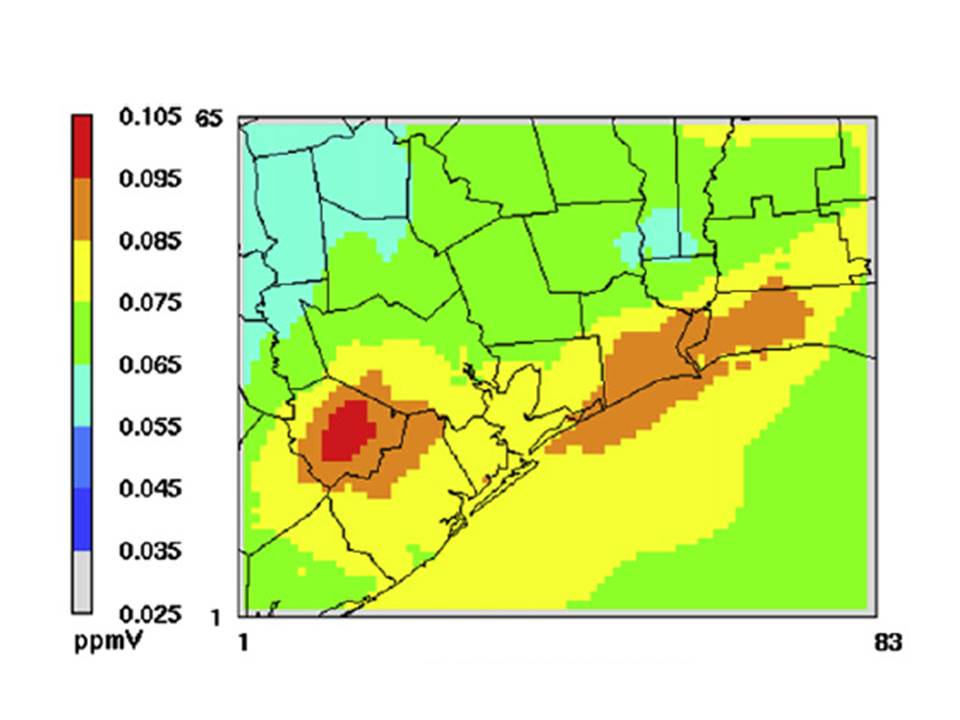Ozone and Particulate Matter Modeling
Ground-level ozone and particulate matter form from complex interactions among numerous pollutants. Understanding those photochemical processes is crucial to developing cost-effective control strategies. Our work has examined how ozone and particulate matter respond to emissions from a variety of natural and manmade sources. We have also used satellite data and in situ observations to evaluate the performance of the model simulations.
Recent publications:
- Chen et al., 2022. Black carbon emissions and associated health impacts of gas flaring in the United States. Atmosphere, https://doi.org/10.3390/atmos13030385
- Goldman et al., 2021. Assessment of Air Pollution Impacts and Monitoring Data Limitations of a Spring 2019 Chemical Facility Fire. Environmental Justice, https://doi.org/10.1089/env.2021.0030
- Wang et al., 2020. Spatiotemporal ozone pollution LUR models: Suitable statistical algorithms and time scales for a megacity scale. Atmospheric Environment, https://doi.org/10.1016/j.atmosenv.2020.117671
- Zhang et al., 2017. Source apportionment of biogenic contributions to ozone formation over the United States, Atmospheric Environment, https://doi.org/10.1016/j.atmosenv.2017.05.044
- Tang et al., 2015. Influence of satellite-derived photolysis rates and NOx emissions on Texas ozone modeling. Atmospheric Chemistry and Physics, https://doi.org/10.5194/acp-15-1601-2015

Contact
Dr. Daniel Cohan
Professor
Civil and Environmental Engineering
Rice University
6100 Main Street MS 318
Houston, TX 77005
Phone: 713-348-5129
Office: Ryon 209
Email: cohan 'at' rice.edu
